Lotus Seeds
Seeds from the flowers of the Lotus plants are called Lotus Seeds. These edible seeds, also known as Lotus Nuts, are primarily collected from the Nelumbo nucifera or Indian Lotus species. They are widely used Asian and Chinese cuisines as well as for medicinal purposes.
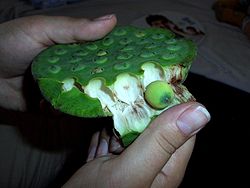
Lotus Seeds
Table Of Content
Lotus Seeds Scientific Name
The scientific name for the lotus plants from which these seeds are mainly collected is Nelumbo nucifera.
Description of Lotus Seeds
These small seeds are found inside the seed pods of Lotus. Each pod contains an average of 20 seeds with each seed being surrounded by a shell. This shell turns quite hard when the seed dry.
Size: The size of these seeds varies between 0.30 inch and 0.90 inch.
Shape: Their shape varies from round to oval.
Color: Fresh seeds are green turning cream or yellow when dried.
Taste: Fresh, ripe seeds of lotus tastes much like fresh (non-dried) hazelnuts.
Lotus Cultivation
Lotus plants are usually cultivated from their rhizomes or tubers. However, one can also use the easily available seeds to cultivate the beautiful lotus plants in order to harvest fresh seeds from these flowers. The dried seeds are soaked in water until they develop green shoots. Once the seeds reach this stage they need to be planted at the bottom of a large 400 to 500 liter pot. The rhizomes can also be planted in a pot with 25 cm to 35 cm thick layer of soil under 10 cm deep water levels. One can also grow these plants in small pools or ponds.
Growing Conditions
Soil: They grow well in rich clayey soils well fertilized with rotten manure.
Sunlight: Plenty of sunlight is essential for the proper growth of these plants. Direct sunlight helps the foliage of these plants to grow quickly.
Temperature: It is ideal to keep the rhizomes in a temperature between 18 and 22 °C to grow into plants.
Water: The rhizomes should be planted at least 10 cm deep in water as Lotus is a water plant. The water level should be increased gradually up to 22 to 25 cm with the growth of the plant.
Harvesting
The seeds are harvested once the flowers reach full maturity with properly ripe seed heads. Seeds harvested at this stage are called “brown peel seeds” after they are dried. Sometimes, seeds are collected from green seed heads with the seeds being almost completely matured. These seeds are commercially known as “white seeds” in their dried form.
Lotus Seeds Health Benefits
Numerous health benefits can be derived from these seeds in their fresh and dried form.
- Lotus Seeds are rich in many major nutrients including proteins, fats, iron, some starches, magnesium, zinc and calcium.
- They are highly beneficial for heart, kidney and spleens.
- These seeds can fight chronic diarrhea.
- They help to increase appetite as they have astringent properties.
- Their calming qualities are beneficial for hypertension and irritability.
- These seeds have anti-aging properties as they contain the enzyme called L-isoaspartyl methyltransferase.
Lotus Seeds Nutritional Facts
Here is the nutritional information for 100 gm of raw seeds:
| Name | Amount |
| Calories | 89.00 |
| Protein | 4.13 gm |
| Total Fat | 0.53 gm |
| Carbohydrate | 17.28 gm |
| Calcium | 44.00 mg |
| Iron | 0.95 mg |
| Magnesium | 56.00 mg |
| Phosphorus | 168.00 mg |
| Potassium | 367.00 mg |
| Sodium | 1.00 mg |
| Zinc | 0.28 mg |
| Copper | 0.09 mg |
| Manganese | 0.62 mg |
| Vitamin C | 0.00 mg |
| Thiamin | 0.17 mg |
| Riboflavin | 0.04 mg |
| Niacin | 0.43 mg |
| Vitamin B6 | 0.17 mg |
| Saturated Fat | 0.09 g |
| Monounsaturated Fat | 0.10 g |
| Polyunsaturated Fat | 0.31 g |
| Cholesterol | 0.00 mg |
Uses of Lotus Seeds
The Lotus Nuts or Seeds have many edible as well as medicinal uses. They are considered to be a sort of health food in many countries. These seeds are also used for various culinary purposes.
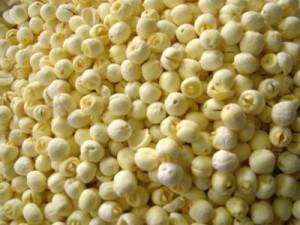
Picture 2 – Lotus Seeds Photos
Edible Uses
- Raw seeds of these plants are consumed as snack in their fresh or dried form.
- They are used to make “Lotus Seed Paste” which is used in numerous Chinese desserts and pastries.
- This paste is also used in Japanese cuisine as a filling for cakes and desserts.
- They are cooked in syrup to make “crystallized seeds” which can be consumed as nuts.
- These seeds are also used for preparing soups, congee and other dishes.
Medicinal Uses
- These seeds are extensively used in traditional Chinese medicines.
- The seeds are used for the treatment of diarrhea.
- They are also used to cure stress related problems like insomnia and palpitations.
Lotus Seed Recipes
The seeds from the Lotus plants are widely used in various recipes in different cuisines mainly in Asia. Some recipes using this nut include:
- Lotus Seeds Soup
- Chinese Sweet Red Bean Soup
- Candied Lotus Seeds
- Moon Cake
- Pumpkin Soup with Lotus Seeds
- Winter Rice Pudding With Dried Fruits
- Panjeeri
Using Lotus Seeds during Pregnancy
One should avoid consuming these nuts during pregnancy.
How to Cook Lotus Seeds
Dried Lotus nuts are easily available in the market. These dried seeds need to be soaked in water overnight before using them in cooking. Fresh seeds of these plants should be washed properly in order to be eaten raw.
How to Store Lotus Seeds
One can store the dried seeds in airtight plastic containers in a cool and dry place away from sunlight. Fresh Lotus Seeds can be stored for a week when kept under refrigeration in dry zip-lock bags.
Lotus Seeds Interesting Facts
Here are some interesting facts about these seeds:
- It is one of the main ingredients for the Chinese dessert “moon cake” eaten during mid-autumn moon watching and lunar worship festival of China called the Zhongqiu.
- The seeds pop out of the pods of the Lotus on their own once the pods are completely dry. Due to this reason, they are called “graine a voler” or “flying seeds” in southern regions of USA.
- People from Hindu religion use strings made of these seeds for “jaap” of goddess Lakshmi.
Side Effects of Lotus Seeds
There are no known side effects of consuming these nuts; however, it may cause allergic reactions to some people. Patients undergoing treatment for diseases like diabetes, cholesterol and cardiac or psychiatric conditions should avoid consuming Lotus nuts.
Price and Availability of Lotus Seeds
Dried and fresh Lotus nuts or seeds are available for sale both in stores and online. However, fresh seeds are not as available in markets as the dried ones except for the areas where lotus is cultivated. The price range for 8 ounce of these seeds varies from $ 15 to $ 20.
Lotus Seed Pictures
Here are some images of the Lotus seeds.
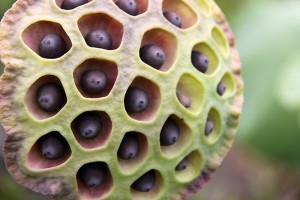
Picture 3 – Lotus Seeds Picture
Lotus seeds are becoming very popular as health food for being highly beneficial for health and easy to obtain. Cultivating Lotus plants is quite easy as they do not require much maintenance. These are among the main reasons for their increasing popularity.
References:
http://www.fitho.in/guide/nuts-seed/lotus-seed/
http://www.tarladalal.com/glossary-lotus-seeds-507i
http://www.kriyayoga.com/photography/photo_gallery/v/lotus_flower/lotus_seeds-dsc01770-g1.jpg.html
http://www.livestrong.com/article/179060-the-benefits-of-lotus-seeds/
https://www.tarladalal.com/glossary-lotus-seeds-makhana-fox-nuts-kamal-ke-beej-507i
- by Deepamala Bhattacharya
- November 2nd 2011

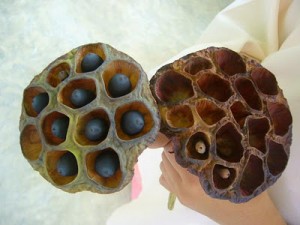
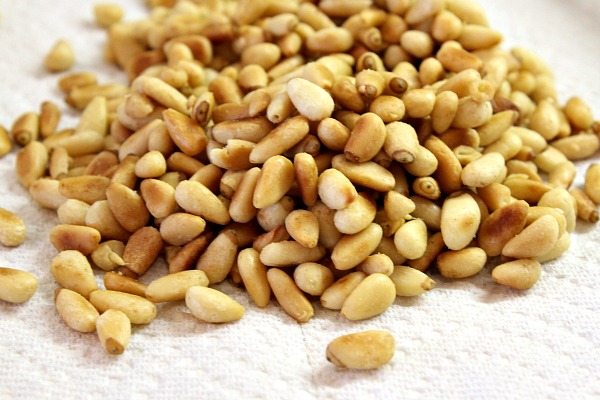

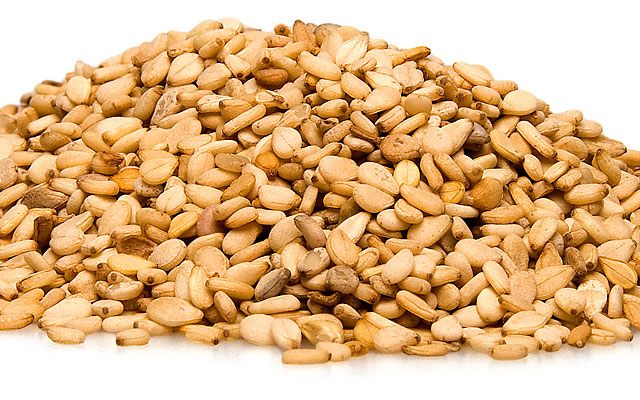
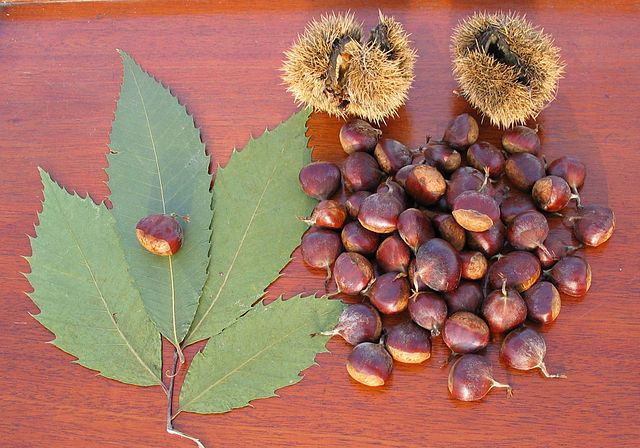















Leave a Reply